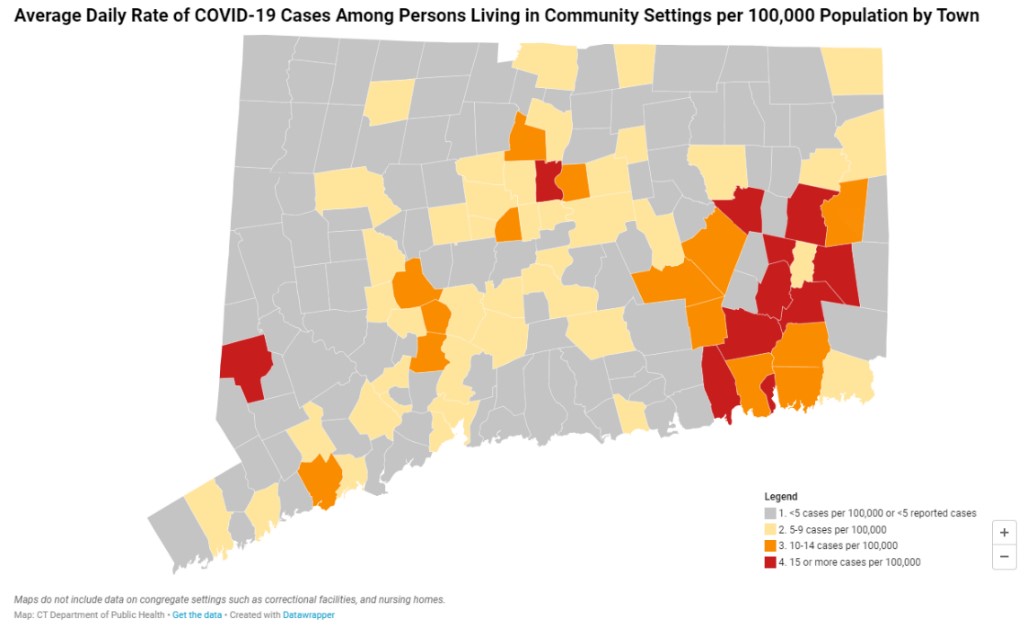The Connecticut Department of Public Health (DPH) today is launching a new weekly, color-coded COVID-19 alert system for every city and town in the state, showing the average daily case rate per 100,000 population for the last two weeks. The new weekly alert level is also accompanied by municipal-level guidance on recommended actions for individual residents, institutions such as schools, houses of worship and community organizations, plus municipal leaders and local health directors.
(Hint: Click anywhere on above map to visit the interactive version on the state data portal.)
The municipal level alert map will be updated every week and is available online. It is color coded according to the following criteria: Red level alert is for municipalities that have a two week average daily COVID-19 case rate higher than 15 per 100,000 population. Orange level alert is for municipalities with case rates between 10-14 per 100,000 population. Yellow alert level is for case rates between 5-9 per 100,000 population. Municipalities with case rates lower than five per 100,000 population will be colored in gray.
This week, the following municipalities are in the higher red-level alert category:
|
|
|
|
|
|
|
|
|
|
|
The following is guidance for individuals and communities based on the color-coded alert levels:
DPH will be working with individual cities and towns as well as local health departments to provide community resources and help make community level decisions based on COVID-19 prevalence among residents.




